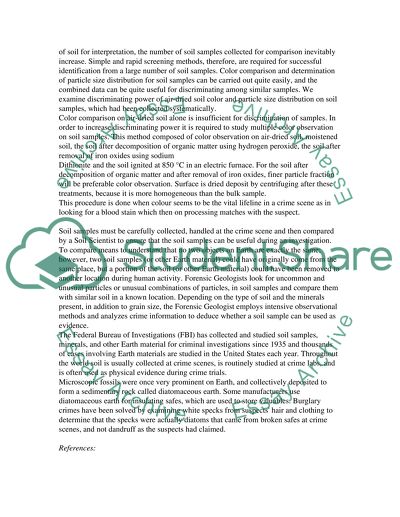Forensic soils examination Essay Example | Topics and Well Written Essays - 500 words. Retrieved from https://studentshare.org/miscellaneous/1503473-forensic-soils-examination
Forensic Soils Examination Essay Example | Topics and Well Written Essays - 500 Words. https://studentshare.org/miscellaneous/1503473-forensic-soils-examination.


